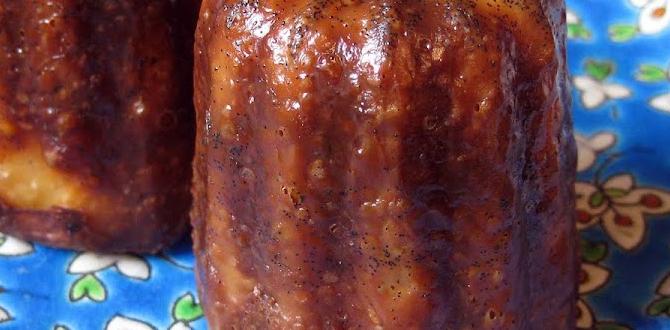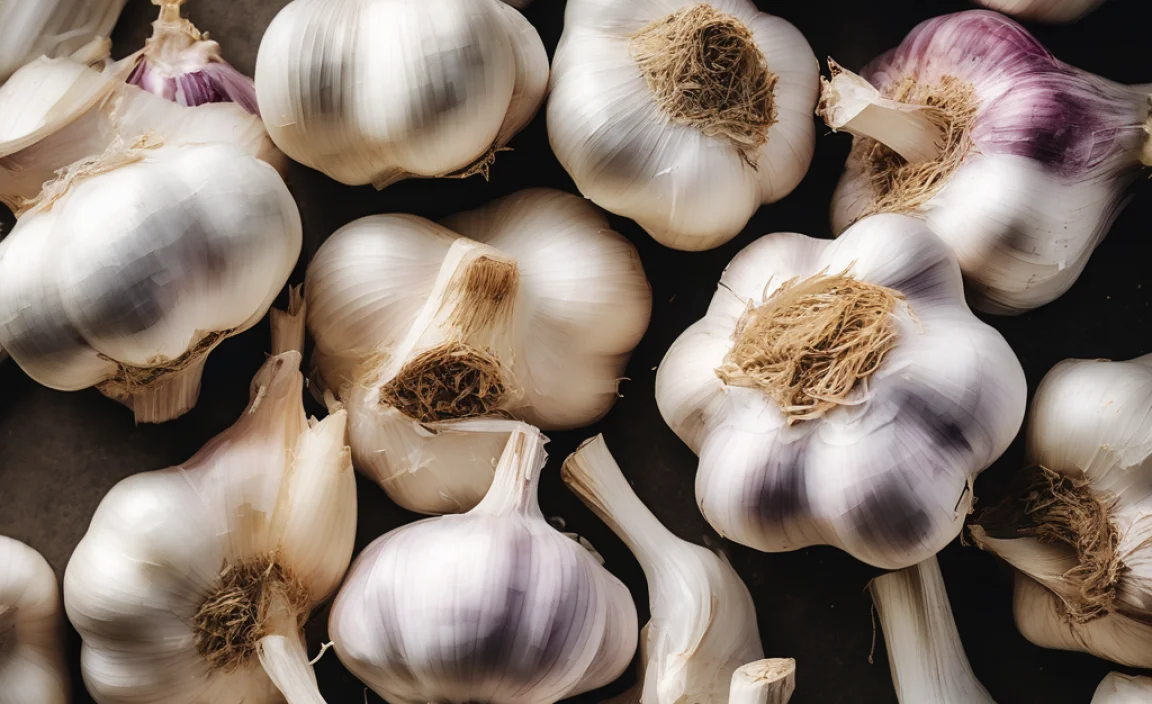Embark on a Kerala Sadya Feast Tour with this essential guide! Discover how to navigate the incredible vegetarian banquet, understand its traditions, and savor every delicious dish on your culinary journey through South India. This guide simplifies the experience, making it enjoyable for everyone.
Have you ever heard of a grand feast served on a banana leaf? That’s a Sadya from Kerala, India! It’s a special meal, usually vegetarian, packed with so many amazing tastes and textures. Trying it for the first time can feel a bit overwhelming, with so many dishes and a unique way of eating. Don’t worry! FoodsGuider is here to make your Kerala Sadya feast tour super easy and fun. We’ll walk you through what Sadya is all about, what to expect, and how to enjoy every single bite. Get ready for a flavor adventure!
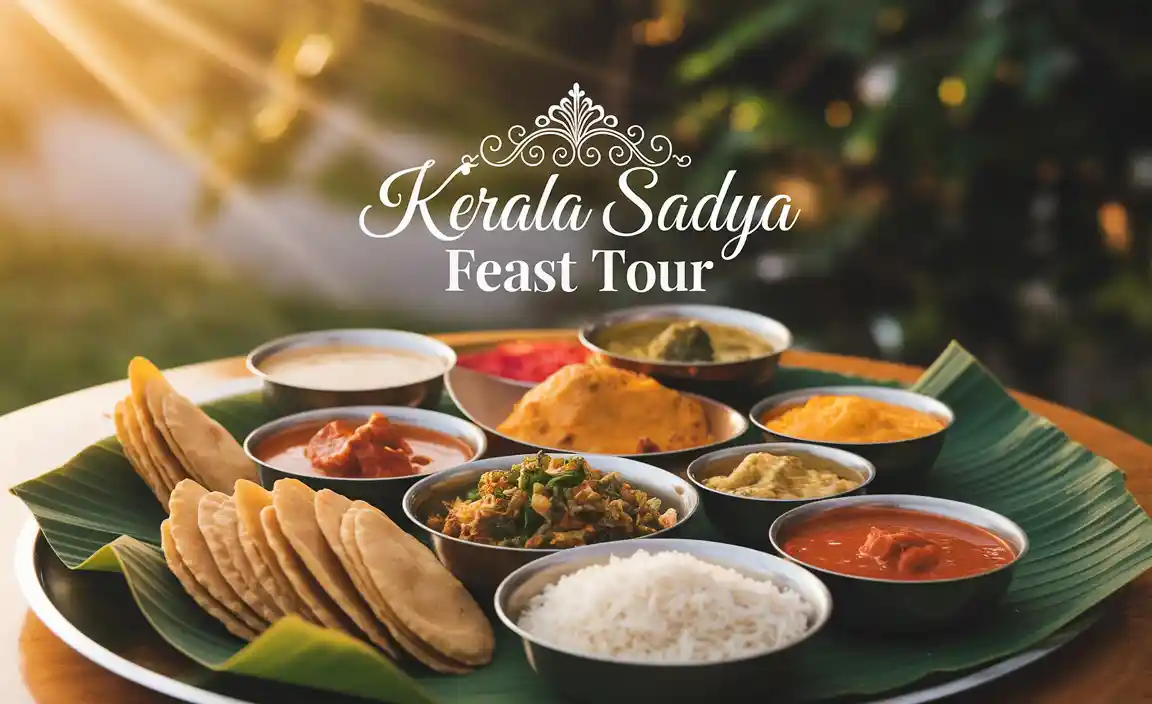
What is a Kerala Sadya Feast?
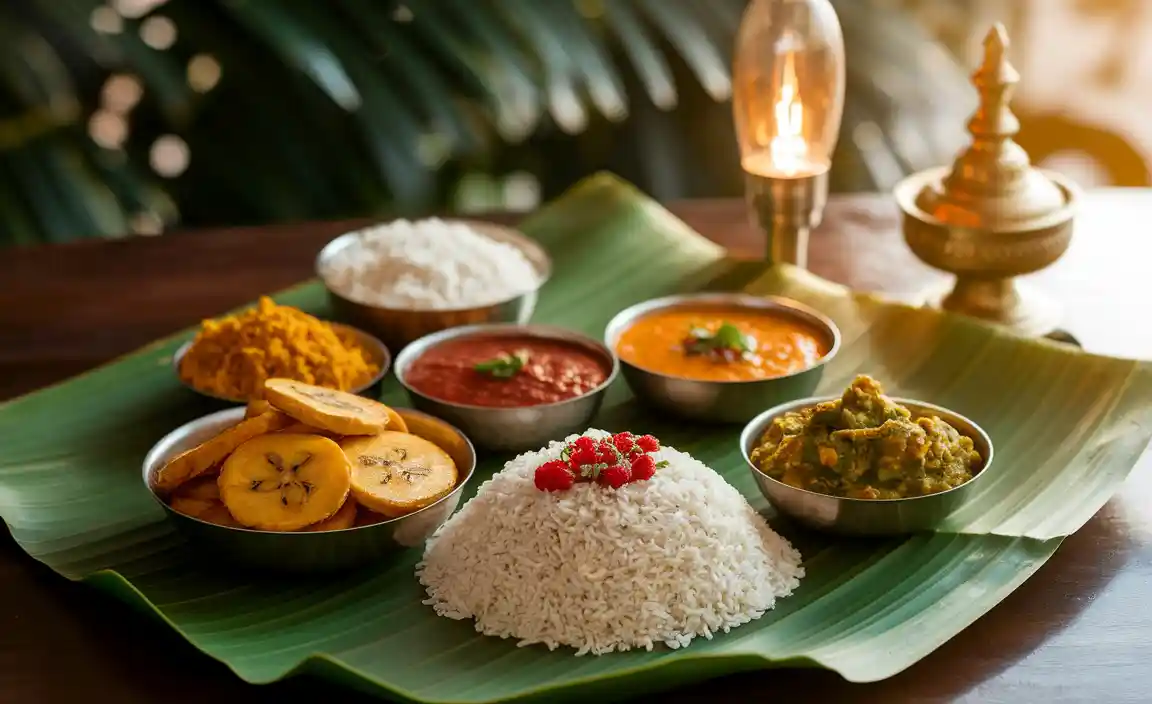
A Sadya (pronounced “sud-yah”) is a spectacular, elaborate vegetarian banquet served in Kerala, a beautiful state in South India. It’s traditionally served on a fresh banana leaf, which is not just a plate but also imparts a subtle aroma and flavor to the food. Sadya is more than just a meal; it’s a cultural experience, often prepared for festivals like Onam and Vishu, weddings, and other special occasions.
The hallmark of a Sadya is its sheer variety. While the exact number of dishes can vary, it typically includes anywhere from 20 to over 30 different vegetarian items. These range from savory curries and tangy pickles to crispy chips and sweet desserts, all meticulously prepared and arranged on the banana leaf in a specific order. The meal is a delightful exploration of Kerala’s rich culinary heritage, showcasing a harmonious blend of flavors – sweet, sour, spicy, salty, and bitter.
The banana leaf itself is prepared in a traditional way. The broader end is usually placed to the left of the diner. The food is then served in a systematic pattern, starting with rice in the center and moving outwards. This arrangement ensures that each component complements the others perfectly, creating a symphony of tastes with every spoonful.
Why a Kerala Sadya Feast Tour?
Planning a trip to Kerala? A Sadya feast tour is an absolute must-do! It’s your golden ticket to experiencing the heart and soul of Keralan cuisine. Beyond just eating, it’s about understanding traditions, savoring authentic flavors, and immersing yourself in a unique cultural practice. Without a guide, navigating this grand meal might seem daunting. You might wonder what each dish is, how to eat it, or even where to find the best Sadya. This tour aims to demystify the Sadya, ensuring you have a truly memorable and delicious culinary adventure.
Imagine sitting down to a vibrant spread, your senses captivated by the aromas. You’ll learn about the significance of each dish and how they come together to create a balanced and satisfying meal. This tour isn’t just about tasting; it’s about appreciating the artistry, the history, and the communal spirit that surrounds a Sadya. By the end, you’ll not only have enjoyed an incredible feast but also gained a deeper appreciation for Kerala’s vibrant food culture.
Preparing for Your Sadya Experience
To make the most of your Sadya feast tour, a little preparation goes a long way. Think of it like preparing to visit a new city – knowing a few key things makes the journey smoother and more enjoyable.
What to Expect
- A Banana Leaf Plate: Your “plate” will be a fresh, clean banana leaf. It’s eco-friendly and adds to the authentic experience!
- Abundant Variety: Get ready for a spread of over 20 different vegetarian dishes. Yes, it’s a lot, but it’s all part of the fun!
- Traditional Etiquette: Usually, you eat with your right hand. Don’t worry if you’re not used to it; most places are understanding. It’s all about connecting with the food.
- Served Hot: Dishes are served in stages, often piping hot, directly onto your leaf by servers.
- A Full Stomach Guarantee: Sadya is a hearty meal. Pace yourself and savor each bite!
What to Wear
Comfort is key! Since you might be sitting on the floor in some traditional settings or enjoying a relaxed meal, opt for comfortable, loose-fitting clothing. Light cotton fabrics are ideal, especially in Kerala’s tropical climate. Avoid anything too restrictive. Many restaurants and homes welcome casual wear, but it’s always a good idea to be presentable, as it’s a special feast.
When Best to Experience Sadya
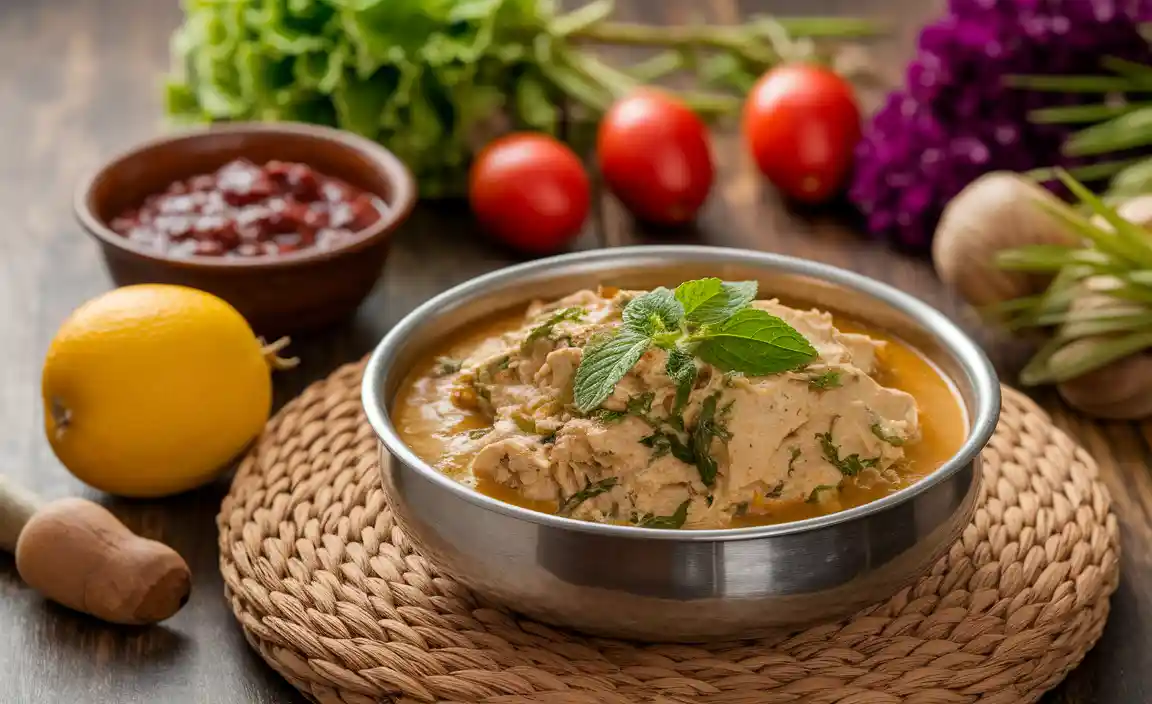
While Sadya can be enjoyed year-round, it’s particularly special during festivals. The most famous occasion is Onam, the harvest festival of Kerala, usually celebrated in August or September. Vishu, the New Year in Kerala (mid-April), is another prime time. However, many restaurants and traditional eateries serve Sadya daily, especially during lunch hours, making it accessible anytime you visit. If you’re aiming for the most authentic festival experience, plan your trip around Onam or Vishu.
Navigating the Banana Leaf: The Sadya Layout
The presentation of Sadya on a banana leaf is an art form. Each dish has its designated spot, creating a visually appealing and structurally sound meal. Understanding this layout is half the battle, and it ensures you experience the flavors in the intended order.
Imagine the banana leaf placed with the broad end pointing towards your left. This is your canvas, and the Sadya is the masterpiece painted upon it. The placement is strategic, ensuring that the gravies don’t mix prematurely with the rice and that the accompaniments are within easy reach.
Here’s a general idea of how the Sadya is arranged. Keep in mind that slight variations exist based on region and tradition, but this serves as a fantastic starting point:
| Position on Leaf | Typical Dish(es) | Purpose |
|---|---|---|
| Extreme Left (Top Corner) | Pickles (Achar – lime, mango), Papadum (Pappadam), Sharkara Upperi (jaggery-coated banana chips) | Appetizers and crunchy elements to start or accompany the meal. The pickles add a tangy kick, and jaggery chips offer sweetness. |
| Next to the pickles (moving right) | Kootu Curry (thick lentil and vegetable curry), Thorans (dry stir-fried vegetables) | These are drier preparations that pair well with rice. Thorans are finely chopped vegetables seasoned with coconut and spices. |
| Center-Left | Olan (white gourd and coconut milk curry), Aviyal (mixed vegetable medley in yogurt and coconut gravy) | Creamy and mildly spiced curries forming the next layer. Aviyal is a quintessential Sadya dish. |
| Center | Rice (Choru) | The heart of the meal. Usually begins with plain rice, and later, flavored rice varieties are added. |
| Center-Right | Sambar (a lentil and vegetable stew), Rasam (a thin, tangy soup) | These are the liquid components. Sambar is poured over rice and vegetables, while Rasam is usually taken towards the end, aiding digestion. |
| Extreme Right (Top Corner) | Payaasam (dessert), Pazham Kalan (yogurt-based curry) | Sweet dishes and yogurt-based curries conclude the meal. There are typically one or two types of Payasam. |
The serving typically begins with the rice. Then, the various curries and accompaniments are added sequentially. Towards the end, the rice might be mixed with specific condiments like ghee and sambar, and finally, the sweet payasam concludes the feast. Eating with your hand, especially the right hand, is considered traditional and allows you to mix the rice and curries to your liking, feeling the textures and temperatures directly.
Must-Try Dishes in a Kerala Sadya
With so many dishes, it’s easy to feel overwhelmed. But don’t worry! Here’s a breakdown of some of the most iconic and delicious Sadya items you absolutely must try:
- Sambar: The undisputed king of Sadya! A flavorful lentil and vegetable stew, it’s usually the first gravy to be served with rice. Kerala Sambar has a distinct taste owing to regional spices.
- Rasam: A thin, peppery, and tangy soup, often made with tamarind, tomatoes, and spices. It’s served towards the end and is incredibly soothing and aids digestion.
- Aviyal: A thick medley of various vegetables (like drumsticks, plantain, carrots, yams) in a gravy made of yogurt and coconut. It’s rich, creamy, and utterly delicious.
- Olan: A mild and simple curry made with white gourd (ash gourd), coconut milk, and mild green chilies. Its subtle sweetness is a wonderful contrast to spicier dishes.
- Kootu Curry: This can be made with various vegetables (like ash gourd, chaya roots) combined with lentils (like moong dal) and flavored with coconut and spices. It’s usually thicker than Sambar.
- Thorans: Dry stir-fries made from finely chopped vegetables like cabbage, beans, or carrots, sautéed with grated coconut, mustard seeds, and curry leaves. They add a delightful texture and fresh flavor.
- Ezhuthani Curry: A distinct curry from the Palakkad region, often made with ash gourd and coconut in a thin gravy.
- Pappadum/Papadum: Crispy fried lentil crackers that add a satisfying crunch.
- Sharkara Upperi: Jaggery-coated banana chips that offer a delightful sweet crunch. A perfect starter or accompaniment.
- Kichadi and Pachadi Pendulum: These are yogurt-based relishes. Kichadi is usually a bit spicier, often with vegetables like ladies’ finger, while Pachadi is milder with ingredients like pineapple or pumpkin.
- Mango Achar & Lime Achar: Tangy pickles that cut through the richness of the meal and add a zesty punch.
- Payasam: The grand finale! A sweet pudding, usually made with milk, jaggery or sugar, cardamom, and vermicelli (semiya) or rice. There are often two varieties – one made with milk and another with jaggery and coconut milk.
- Pazham (Banana): Often, a small piece of ripe banana is served at the very end to balance the flavors.
How to Eat Sadya Like a Local
Don’t be intimidated! Eating Sadya is a hands-on, intuitive experience. The traditional way is to use your right hand, as it’s considered more sacred and hygienic for eating. Here’s a simple guide:
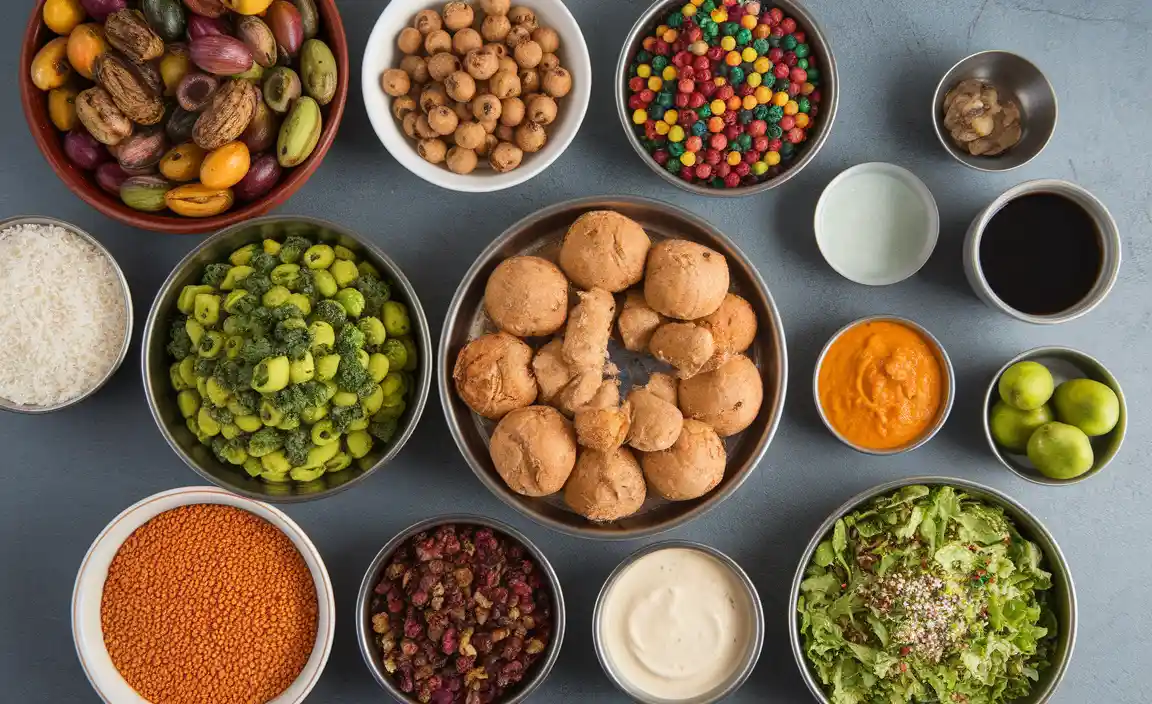
- Wash Your Hands: Start by thoroughly washing your hands.
- The Banana Leaf: Traditionally, the leaf is placed with the broad end to your left. The server will start placing rice and other dishes.
- Rice First: The rice is usually served in the center of the leaf.
- Curry Sequence: The server will add curries and accompaniments in a specific order. You can indicate if you want more or less of something.
- Mixing is Key: Use your right hand to gently mix the rice with the various curries. Start with the milder dishes and move towards the spicier ones.
- The Right Hand Technique: It’s usually done by making a small well in the rice, adding a bit of curry, and then mixing it. Try to use the tips of your fingers rather than your palm.
- Savor Each Bite: Take small portions and enjoy the combination of flavors and textures.
- Accompaniments: Use the pickles, chips, and thorans to add variety and crunch.
- Rasam: Pour a little Rasam over the remaining rice towards the end of the meal. It’s meant to be sipped or eaten with the last bits of rice.
- Dessert: Conclude with the sweet Payasam. Some people like to mix a little Payasam with the leftover rice for a sweet and savory finish.
- Finishing Up: Once done, fold the banana leaf away from you (this signifies the end of the meal) and move it aside.
Most people find eating with their hands a wonderfully intimate and satisfying way to connect with their food. It’s an experience that engages all your senses and truly makes you feel part of the culture.
Where to Find Authentic Sadya
Kerala is dotted with places offering a genuine Sadya experience. The best Sadya is often found in traditional restaurants, temple premises, and during festivals. Here are some types of places to look out for:
- Traditional Restaurants: Look for eateries that specialize in Keralan cuisine. These are often called ‘hotels’ in Kerala, but they are restaurants. Many will prominently advertise ‘Sadya’ during lunch hours.
- Temple Festivals: Many temples in Kerala serve Sadya to devotees, especially during festival days. These are often authentic, community-style meals.
- Marriages and Festivals: If you are lucky enough to be invited to a Kerala wedding or a major festival like Onam or Vishu, you will undoubtedly get to enjoy an elaborate Sadya.
- Homestays and Local Homes: Staying in a homestay can offer a chance to experience a home-cooked Sadya, often the most personal and delicious kind.
Popular destinations in Kerala known for their Sadya include:
- Thiruvananthapuram (Trivandrum): Many famous restaurants serve excellent Sadya.
- Kochi (Cochin): You’ll find a good mix of traditional and slightly modernized Sadya options.
- Kottayam & Palakkad: These districts are known for their very traditional and authentic preparations.
Tip: The Government Mention
For a truly authentic and often well-regulated dining experience, consider trying Sadya at government-run establishments or those recognized by tourism boards. For instance, the Kerala Tourism website often highlights authentic food experiences and responsible tourism practices across the state, which can be a great resource for finding quality Sadya outlets.
Beyond the Feast: Other Kerala Culinary Delights
While Sadya is the star, Kerala’s culinary landscape is vast and exciting. Don’t leave without exploring other local specialties!
Must-Try Keralan Dishes:
- Appam and Stew: Fluffy, lacy rice pancakes (Appam) served with a fragrant vegetable or meat stew, often made with coconut milk.
- Puttu and Kadala Curry: Steamed cylinders of ground rice layered with coconut, served with a spicy black chickpea curry. A popular breakfast item.
- Malabar Biryani: A fragrant and flavorful rice dish from the Malabar region, known for its distinct spices and tender meat.
- Fish Molee: A mild, creamy fish curry cooked in coconut milk and turmeric.
- Banana Fritters (Pazham Pori): Sweet, deep-fried slices of ripe plantain coated in batter. A delightful snack.
- Palada Payasam: A creamy, milky dessert made with rice flakes, sugar, and milk.
Exploring these dishes will give you a fuller understanding of Kerala’s diverse and delicious food culture. Each region within Kerala has its own unique flavors and specialties, influenced by history, geography, and local ingredients.
Frequently Asked Questions (FAQ)
What are the main components of a Kerala Sadya?
A Kerala Sadya is a grand vegetarian feast that includes steamed rice, a variety of curries (like Sambar, Rasam, Olan, Aviyal), dry vegetable stir-fries (Thorans), pickles, chutneys, crunchy items like Pappadum and banana chips, and sweet desserts called Payasam. It’s all served on a banana leaf.
Is Sadya always vegetarian?
Traditionally, Sadya is a strictly vegetarian meal. It’s prepared without any meat, fish, or eggs, making it suitable for vegetarians and vegans (with some modifications, as certain dishes use yogurt or ghee).
How many dishes are typically in a Sadya?
The number of dishes can vary greatly, but a traditional Sadya typically features anywhere from 20 to over 30 different vegetarian preparations, offering a wide array of tastes and textures.
What is the significance of serving Sadya on a banana leaf?
Serving on a banana leaf is an eco-friendly practice that adds a unique aroma and subtle flavor to the food. It’s also a traditional and integral part of the dining experience in Kerala, believed to impart

